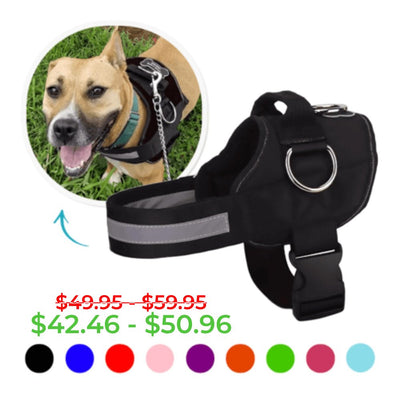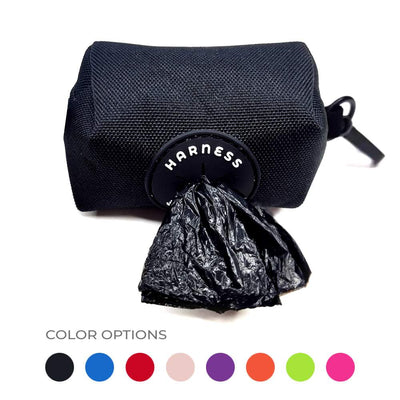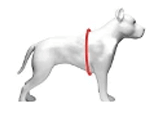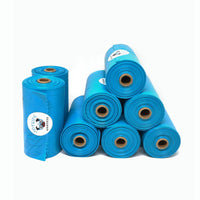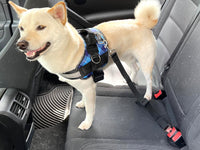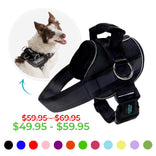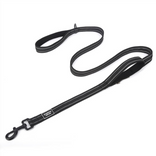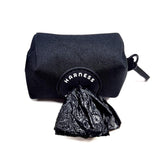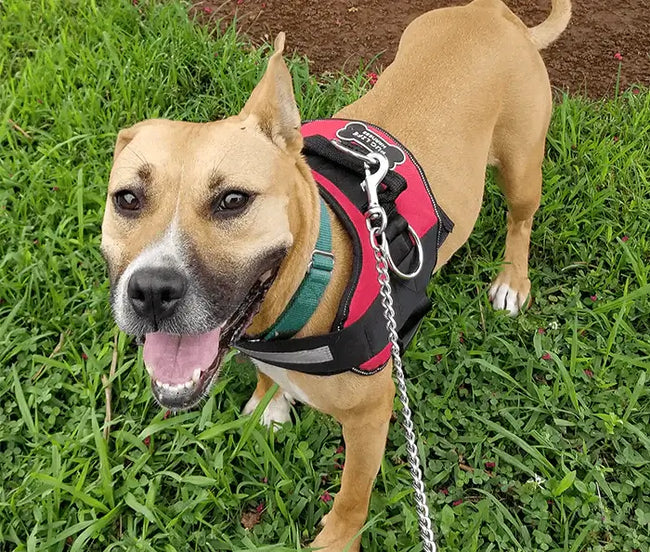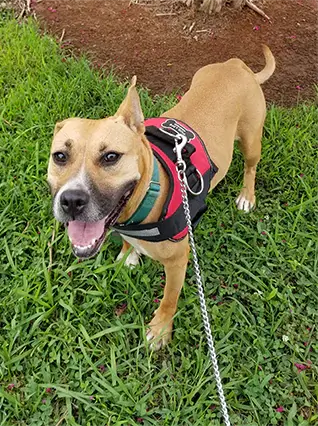Simple Ways to Help Your Dog Through Shedding Season
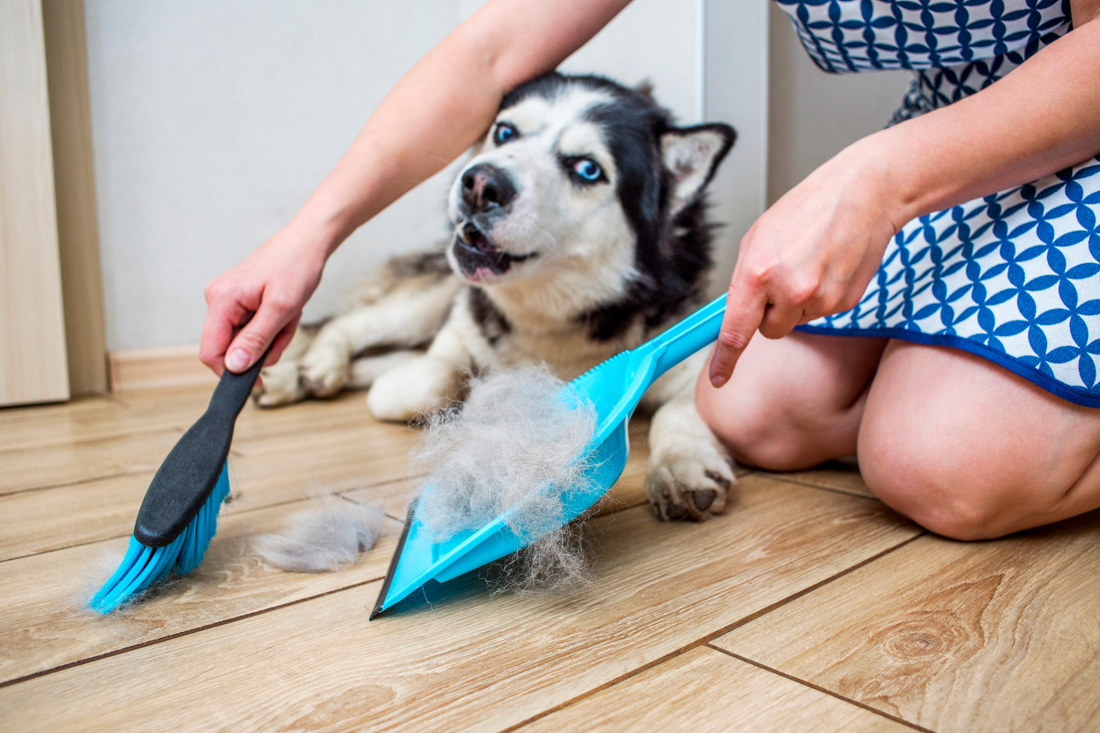
As the seasons change, many dog owners notice an uptick in shedding. While shedding is a natural process that helps dogs maintain a healthy coat, managing loose fur can be challenging—both for your home and your pet’s comfort. Fortunately, with the right grooming routine and care, you can keep your dog looking and feeling their best during shedding season.
Why Dogs Shed?

Shedding is a normal process that allows dogs to get rid of old or damaged fur. Most dogs experience heavier shedding during seasonal changes—especially in the spring and fall—when their coats adjust to warmer or cooler weather. Dogs with double coats, such as Golden Retrievers, Huskies, and German Shepherds, tend to shed more heavily during these transitions. However, even short-haired breeds can shed year-round.
Shedding is influenced by factors such as breed, age, health, and environment. While some shedding is natural, excessive hair loss can indicate underlying health issues, such as allergies, skin infections, or hormonal imbalances. If you notice bald patches, irritated skin, or sudden increases in shedding, consult your veterinarian.
Tips for Managing Your Dog’s Shedding
Managing shedding involves a combination of regular grooming, proper nutrition, and maintaining a clean home environment. Here are some practical tips to help you and your dog navigate shedding season with ease:
1. Brush Your Dog Regularly
 Brushing is one of the most effective ways to control shedding and keep your dog’s coat healthy. Regular brushing removes loose fur, prevents matting, and stimulates the skin’s natural oils, promoting a shiny, healthy coat. The frequency and type of brush you use will depend on your dog’s coat type:
Brushing is one of the most effective ways to control shedding and keep your dog’s coat healthy. Regular brushing removes loose fur, prevents matting, and stimulates the skin’s natural oils, promoting a shiny, healthy coat. The frequency and type of brush you use will depend on your dog’s coat type:
Short-Haired Dogs: Use a bristle brush or grooming glove to remove loose hair and distribute natural oils.
Medium to Long-Haired Dogs: A slicker brush or deshedding tool works well for removing loose fur and preventing tangles.
Double-Coated Dogs: A rake or undercoat brush is essential for reaching the dense undercoat, especially during seasonal shedding.
Aim to brush your dog at least a few times a week during shedding season, and daily for heavy shedders. Not only does this help reduce loose hair around your home, but it also strengthens the bond between you and your dog.
2. Bathe Your Dog Appropriately

Regular baths can help loosen and remove excess fur, making it easier to manage shedding. Use a gentle, dog-friendly shampoo that promotes skin health and coat condition. Avoid overbathing, as it can strip the skin of natural oils and lead to dryness and irritation.
During shedding season, consider using a deshedding shampoo or conditioner designed to reduce loose hair. These products often contain ingredients that nourish the skin and strengthen hair follicles, reducing excessive shedding. After bathing, thoroughly dry your dog with a towel or a low-heat dryer, and follow up with a good brushing session to remove any loosened fur.
3. Maintain a Healthy Diet
 A well-balanced diet plays a crucial role in maintaining your dog’s coat health. High-quality dog food that provides essential nutrients—such as omega-3 and omega-6 fatty acids—helps support healthy skin and reduce excessive shedding. Look for foods that contain fish oil, flaxseed, or other sources of healthy fats.
A well-balanced diet plays a crucial role in maintaining your dog’s coat health. High-quality dog food that provides essential nutrients—such as omega-3 and omega-6 fatty acids—helps support healthy skin and reduce excessive shedding. Look for foods that contain fish oil, flaxseed, or other sources of healthy fats.
If your dog’s coat appears dull or shedding seems excessive, talk to your veterinarian about dietary supplements. Omega-3 fatty acid supplements, such as fish oil capsules, can improve coat condition, reduce inflammation, and minimize shedding. Always consult your vet before adding supplements to your dog’s diet to ensure proper dosage and safety.
4. Keep Your Dog Hydrated

Proper hydration is essential for maintaining healthy skin and reducing shedding. Make sure your dog has access to fresh, clean water at all times. Dehydration can lead to dry, flaky skin, which can increase shedding. If your dog isn’t drinking enough water, consider adding moisture to their diet by incorporating wet food or water-rich fruits and vegetables (such as cucumbers or watermelon) in moderation.
5. Manage Stress and Anxiety

Stress and anxiety can contribute to excessive shedding. Changes in routine, loud noises, or unfamiliar environments can cause dogs to shed more than usual. To help your dog stay calm and comfortable, provide a stable routine, a quiet space to relax, and plenty of mental and physical stimulation. Activities like walks, playtime, and puzzle toys can help reduce anxiety and promote overall well-being.
6. Control Shedding in Your Home

While you can’t stop your dog from shedding, you can take steps to minimize the impact on your home:
Vacuum Regularly: Use a vacuum designed for pet hair to keep floors, furniture, and carpets free of fur.
Use Furniture Covers: Washable furniture covers or blankets can help protect your furniture from shedding hair.
Lint Rollers and Pet Hair Removers: Keep lint rollers or pet hair removers on hand to quickly clean up fur from clothing and upholstery.
Air Purifiers: An air purifier with a HEPA filter can help reduce pet dander and hair in the air, improving indoor air quality.
7. Schedule Regular Vet Checkups

If your dog’s shedding seems excessive or is accompanied by other symptoms, such as itching, redness, or bald patches, schedule a veterinary checkup. Skin infections, allergies, hormonal imbalances, and parasites can all contribute to excessive shedding. A thorough examination can help identify and address any underlying health issues, ensuring your dog stays healthy and comfortable.
While shedding is a natural part of a dog’s life, managing loose fur doesn’t have to be a constant struggle. By brushing regularly, maintaining a healthy diet, and creating a comfortable environment, you can help your dog stay happy and healthy throughout shedding season. Remember that each dog is unique, so finding the right combination of grooming and care will ensure your furry friend looks and feels their best.
--
At Joyride Harness, we believe that dogs are the sunshine in our lives, which is why we have made it our mission to keep dogs happy, healthy, and safe through the products we sell and the information we share through our blog. We also believe in paying it forward, which is why we have our Paw It Forward initiative, where we have made it our mission to enhance the quality of living for our dog friends. A portion of all Joyride Harness sales goes to our dog rescue of the month. If you have any questions about a product or have a blog topic suggestion, feel free to reach out to us anytime. We look forward to hearing from you!


